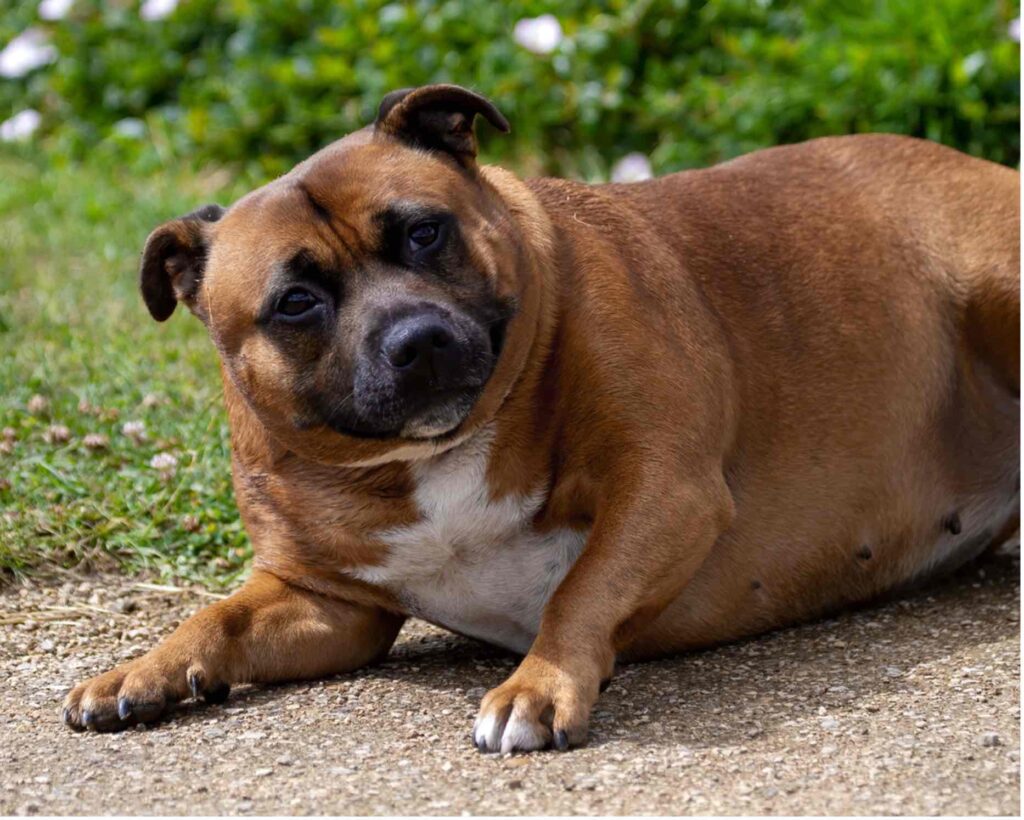How Obesity Affects Pets’ Health: Signs, Prevention, and Treatment

The Growing Concern of Pet Obesity
In recent years, the prevalence of obesity in pets has reached alarming levels across the United States, with estimates suggesting that over 50% of dogs and cats may be classified as overweight or obese. This epidemic mirrors the rising rates of weight-related health issues seen in humans and poses a significant threat to the wellbeing of our furry companions. The harsh reality is that excess weight can not only shorten a pet’s lifespan but also diminish their overall quality of life.
Obesity triggers a cascade of health challenges, significantly impacting various aspects of a pet’s life. For instance:
- Joint Problems: The additional weight creates undue stress on joints, leading to conditions such as arthritis. A study by the Association for Pet Obesity Prevention (APOP) found that overweight dogs have a much higher risk of developing degenerative joint diseases, which can severely limit their mobility and playfulness.
- Heart Disease: Obese pets face a greater risk of heart disease, similar to humans. Increased body fat can lead to high blood pressure and heart strain, raising the risk of cardiovascular problems that could lead to fatal outcomes.
- Diabetes: Weight gain disrupts normal insulin function, resulting in diabetes mellitus. A diagnosis not only requires lifelong management but also severely impacts a pet’s lifestyle and activity levels, exacerbating their obesity further.
Recognizing the signs of obesity is crucial for timely intervention. Pet owners should be vigilant about the following indicators:
- Pets struggling to perform everyday activities, such as playing fetch, going for walks, or simply climbing a few stairs.
- Unexplained or excessive weight gain, which should be discussed with a veterinarian if no underlying medical condition is apparent.
- Lack of definition at the waist or ribs—pets should ideally have a visible waistline when viewed from above, and ribs should not feel buried under layers of fat.
As conscientious pet owners, we possess the power to guide our pets towards healthier lifestyles. Implementing changes in diet, encouraging regular exercise, and scheduling periodic veterinary check-ups can help tackle and prevent obesity. For instance, engaging your pet in interactive play, such as tug-of-war or puzzle toys, can stimulate both mental and physical activity. Additionally, educating oneself about proper pet nutrition—such as understanding portion sizes and the nutritional value of different pet foods—can make a significant difference.
Addressing the issue of pet obesity is not merely about aesthetics or fitting into a cute collar. It’s a crucial factor in ensuring that our cats and dogs enjoy longer, healthier, and more fulfilling lives. So, the question remains—are you ready to take the necessary steps towards a healthier future for your furry friend?

DISCOVER MORE: Click here for essential nutrition tips
Understanding the Health Impacts of Pet Obesity
The severe health implications of pet obesity extend beyond mere inconvenience; they can lead to debilitating conditions that affect a pet’s quality of life. Recognizing the health risks associated with obesity is vital for pet owners who wish to safeguard the wellbeing of their four-legged friends. As the numbers rise, with over half of pets in the U.S. classified as overweight or obese, understanding the correlation between excess weight and health issues becomes paramount.
One of the most common afflictions linked to obesity is joint pain and mobility problems. The excess weight strains joints and cartilage, which can accelerate wear and tear, leading to arthritis. This condition manifests as pain and stiffness, making everyday activities like playtime, walks, or even climbing stairs arduous. According to the Veterinary Centers of America, dogs that are overweight are at a 50% increased risk of developing osteoarthritis, severely impacting their ability to enjoy life.
Obese pets also face a significantly heightened risk of heart disease. The pressures of additional body fat can lead to hypertension and increased workload on the heart. Affected pets may show symptoms such as lethargy, coughing, or difficulty breathing—signs that warrant immediate veterinary attention. Data from the American Veterinary Medical Association shows a troubling trend: pets with a body condition score of 5 or higher, on a scale of 9, have a markedly shorter life expectancy and are more prone to critical cardiac issues.
Another grievous effect of obesity is the risk of developing diabetes mellitus, a chronic condition that necessitates ongoing management and, often, lifelong medication. When pets become overweight, their body’s ability to manage insulin becomes impaired, leading to elevated blood sugar levels. Symptoms of diabetes in pets can include excessive thirst, increased urination, and unexplained weight loss despite a normal or increased appetite. If left unmanaged, diabetes can lead to severe complications, including blindness and kidney failure.
In light of these alarming health risks, being able to detect the signs of obesity in pets is essential. Owners should actively monitor for the following indicators:
- Difficulty in executing ordinary activities, such as jumping or running.
- A noticeable lack of energy or disinterest in playtime.
- Visible fat deposits or excessive weight, particularly in the abdominal area.
- The absence of a defined waistline when viewed from above and difficulty feeling their ribs.
Staying informed can empower pet owners to make educated decisions about their pets’ health. A proactive approach involving regular veterinary check-ups, balanced nutrition, and adequate exercise can significantly lower the risks associated with obesity. Understanding portion sizes and providing healthy treats can shift a pet’s lifestyle toward a more balanced diet, while simple playtime activities can help combat inactivity. Ultimately, taking these steps can pave the way for longer, healthier lives for pets, transforming the landscape of pet care.
Signs of Obesity in Pets
Identifying obesity in pets requires vigilance and awareness of the common signs. Typically, owners should look for the following indicators:1. Excess Body Fat: One of the clearest signs is the presence of noticeable fat deposits. In healthy pets, ribs should be easily felt without too much pressure. If you cannot feel them or if your pet’s waist is non-existent when viewed from above, it may be overweight.2. Reduced Activity Levels: Pets that are overweight tend to be less active than their leaner counterparts. If your pet seems lethargic or reluctant to engage in activities they once enjoyed, it may be time to assess their weight.3. Difficulty Breathing: Obese pets often exhibit labored breathing. If your pet pants heavily even during mild exercise or while resting, obesity may be a contributing factor.4. Joint Issues: Increased weight puts significant stress on joints, leading to pain and discomfort. Monitor your pet for signs of limping or difficulty in standing up after resting.5. Skin Conditions: Overweight pets are more prone to skin infections and conditions due to skin folds that can trap moisture and create an ideal environment for bacteria and yeast.
Preventing Obesity in Pets
Preventing obesity in pets can significantly improve their overall quality of life. Here are some effective strategies:1. Proper Diet: Ensure that your pet is consuming a balanced diet suitable for their age, size, and activity level. Consult your veterinarian to determine the appropriate type and quantity of food.2. Regular Exercise: Schedule daily activities that keep your pet engaged and active. Whether it’s walking, playing fetch, or engaging in agility training, sufficient exercise is crucial for weight management.3. Routine Checkups: Regular veterinary visits can help monitor your pet’s weight and overall health. Screening for underlying health issues early on can help in managing weight effectively.4. Controlled Treats: Limit the amount and frequency of treats, opting for healthier alternatives or smaller portions. It’s essential to consider treats as part of their overall caloric intake.5. Education: Pet owners should educate themselves on nutritional needs and proper care to understand the implications of obesity on their pet’s health.
Treatment Options for Obese Pets
If your pet is already facing obesity, there are several treatment options to consider:1. Customized Diet Plans: Work with your veterinarian to develop a weight-loss diet plan tailored specifically for your pet. This may include calorie restriction or specialized weight-loss food.2. Behavioral Modification: Training and behavior modification can instill good habits, such as regular feeding times and reduced begging behaviors, which can contribute to overeating.3. Increased Activity: Gradually increasing physical activity can help your pet shed pounds. Start with shorter walks and progressively increase their duration and intensity.4. Medications: In some cases, vets may recommend weight-loss medications for pets struggling to lose weight through diet and exercise alone. 5. Monitoring Progress: Regularly evaluate progress through weigh-ins and adjustments to diet and activity levels as needed. Proper understanding of how obesity affects pets and implementing strategies for prevention and treatment can lead to healthier, happier companions. For pet owners, the journey towards achieving and maintaining a healthy weight for their pets is both beneficial and deeply rewarding.
EXPLORE MORE: Click here to learn about balanced nutrition for your pets
The Importance of Prevention and Effective Treatment
Preventing obesity in pets is not only about fostering a healthy lifestyle, but it fundamentally revolves around understanding nutrition and exercise. Pet owners are often unaware of the caloric content in their pets’ food and treats, leading to unsuspected weight gain. To tackle this issue head-on, consult your veterinarian to establish a proper dietetics plan tailored to your pet’s specific needs, considering their age, breed, and level of activity. A balanced diet should be filled with nutrients, not empty calories, and it is wise to recognize any hidden dangers in common pet foods, such as high-fat content or artificial preservatives.
Establishing an engaging exercise routine is equally crucial. Aiming for at least 30 minutes of active play every day can have a dramatic impact on your pet’s health. For some pets, simple activities like fetch or frisbee can inspire enthusiasm for physical activity, while others may benefit from more structured routines like agility training or doggy daycare. While cats often enjoy shorter bursts of play, interactive toys can encourage them to exercise regularly, thus contributing to a healthier weight.
Regular weigh-ins at home can also help manage your pet’s weight effectively. Consider investing in a scale specifically designed for pets, allowing you to keep track of their weight trends on a monthly basis. Monitoring your pet’s weight can alert you to any alarming changes that might require professional intervention. Keeping a pet journal can help record their diet and exercise habits, serving as a useful reference during veterinary visits.
Recognizing When Your Pet Needs Help
If your pet is already overweight, immediate action is necessary! Nonetheless, implementing a weight loss program should be gradual to avoid health complications. A sudden drop in weight can shock an animal’s system, leading to conditions such as hepatic lipidosis, particularly in cats. Your veterinarian can design a safe weight loss plan, which may involve a specialized high-protein, low-carbohydrate diet aimed at shedding pounds while maintaining energy levels.
Some pets may require additional support, like specific dietary supplements to assist with weight loss or help manage health issues exacerbated by obesity. For instance, Omega-3 fatty acids can promote joint health, while fiber can enhance satiety, making your pet feel fuller sans the excess calories. In more complex cases, including those where metabolic disorders are suspected, veterinary care may extend to medications to manage appetite or metabolic conditions.
On the other hand, it’s worth noting that some situations might require behavioral consultation. Pets may develop habits based on their environments, such as eating out of boredom or stress. Behavior modification techniques, employing consistent routines and rewarding healthy choices, can serve to break unhealthy patterns. Working with a certified pet behaviorist can unveil underlying issues, facilitating a more comprehensive approach to your pet’s health and wellbeing.
Awareness and education about the dangers of pet obesity, alongside implementing a proactive prevention plan, can drastically alter your pet’s overall health trajectory. With the right knowledge, resources, and veterinary guidance, pet owners can lead their furry companions toward a bright, healthy future filled with joyful wagging tails and feline purrs.
DISCOVER MORE: Click here to learn about the best nutrition for your cat
In Summary: A Healthier Path for Our Pets
Understanding the multifaceted relationship between pet obesity and health is crucial for responsible pet ownership. The signs of obesity are often subtle and can be easily overlooked, yet the long-term consequences can be dire, leading to reduced lifespan and chronic health issues. With the rising trend of pet obesity across the United States, estimated to affect over 50% of dogs and cats, it is imperative for pet owners to take proactive measures.
Prevention begins with a keen awareness of nutrition and exercise. Regular consultations with veterinarians to tailor diet plans and exercise regimens can create a sustainable pathway to health. Interactive play, walks, and tailored activities can keep pets engaged, ensuring they remain active and at a healthy weight. Regular monitoring is vital; tracking weight changes can serve as an early warning system for potential health problems.
For pets already facing the challenges of obesity, a carefully executed weight loss plan that considers their individual needs is essential. Safe weight reduction strategies, dietary modifications, and possibly behavioral consultations can bring about a significant turnaround in their health. Education and awareness are not just beneficial for pets but also empower owners to make informed decisions that foster a healthier lifestyle for their furry friends.
Ultimately, the journey towards maintaining a healthy weight for our pets is a shared responsibility that yields a rewarding return in the form of greater vitality, joyfulness, and companionship. By prioritizing their needs and well-being, we lay the foundation for a happier, healthier life filled with cherished moments together.



